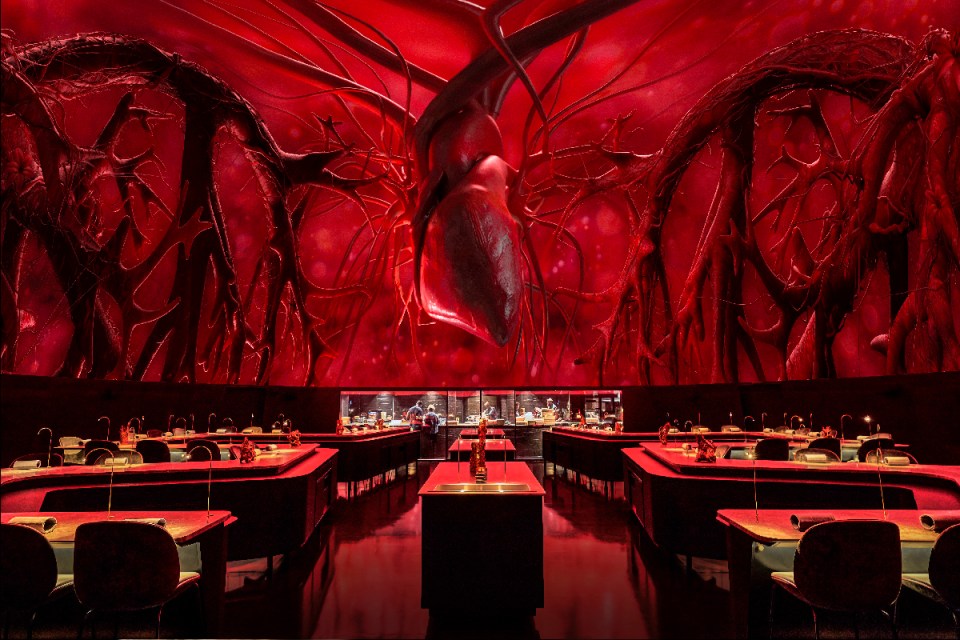No more Noma: What’s next for Copenhagen’s food scene
For decades, Noma has been one of the most coveted restaurants on the planet. It birthed ‘new Nordic’ cuisine in 2003 and stamped the small Danish capital on the gastronomic map, winning the world’s best restaurant award multiple times and holding Michelin stars since 2008. Its stratospheric success was led by head chef and co-founder [...]


For decades, Noma has been one of the most coveted restaurants on the planet. It birthed ‘new Nordic’ cuisine in 2003 and stamped the small Danish capital on the gastronomic map, winning the world’s best restaurant award multiple times and holding Michelin stars since 2008. Its stratospheric success was led by head chef and co-founder René Redzepi, now one of Denmark’s most famous people, who in 2012 was named in Time Magazine as one of its 100 most influential people. Redzepi’s legacy can be tasted all over Denmark and in restaurants across the world, with a legion of Noma alumni having gone on to open their own dining venues.
But last year, as it was celebrating its 20th birthday, Noma announced it will close at the end of 2024. Redzepi told the New York Times that “it’s unsustainable, financially and emotionally, as an employer and as a human being, it just doesn’t work.” He has previously admitted abusing staff and harnessing a toxic culture of burn out and aggression in his kitchen. Some have even suggested Noma’s closure spells the death of fine dining as we know it.
In Copenhagen, however, Noma’s closure is considered a new beginning. With this monolithic culinary behemoth out the way, the spotlight may be allowed to shine on others, many of whom are leading a diverse rebirth of Nordic cuisine; and demand for experiential Danish fine dining has never been stronger. According to the Danish tourism board, a third of tourists visit the country for its gastronomy. This year was one of Denmark’s most successful in the Michelin Guide, with 44 stars awarded to 31 restaurants, 26 of which were given to 15 restaurants in Copenhagen alone, and the city has entries on the worlds 50 best restaurants list, too.
This year Jordnær, founded and run by husband-and-wife team Tina and Eric Vildgaard, picked up its third Michelin star. Jordnær focuses on sourcing the finest seafood to create exquisitely intricate and elegantly crafted dishes that rank among the most beautiful and delicious I’ve ever tried. Just a couple of weeks after the awards ceremony I sat down with Eric, who is hugely optimistic about the future of Danish cuisine.

Jordnær, which translates as “down to earth”, is an accurate description of the unpretentious couple. They understand that, as one of the most awarded restaurants in Denmark, they can be architects of change. Staff at Alchemist only work four days a week, and the restaurant closes at the weekend so staff can be with their families. When talking about toxic kitchen culture, Eric says: “I feel a responsibility to eradicate that. I lead by example and will use my restaurant to train and send out alumni of a new breed that are ambassadors for building a respectful kitchen culture.” He points to restaurant Aure, which won its first Michelin star this year just 81 days after opening on the other side of the city, and who’s head chef used to work in Eric’s kitchen.
One of the most talked about restaurants in Copenhagen is two Michelin stared Alchemist, where a reservation is one of the most sought-after in the world. Demand is such that Alchemist currently has around 50,000 on its waiting list. The food is almost a side show to the spectacle, which takes guests on an often-uncomfortable educational journey through food production, something unexpected from a traditional fine dining restaurant (although it hardly qualifies as such). Dishes, or ‘impressions’ as head chef and owner Rasmus Munk prefers to call them, educate on some of the world’s darkest realities, such as climate change and environmental destruction, child slavery, farming and organ donation.
I can’t say it was pleasant eating a beautiful, freeze-dried butterfly to exemplify a sustainable protein source, or a crispy fried chicken foot to emphasize that we should be eating every part of a farmed animal, but what an experience it was. I wonder how many guests use the edible QR code in the heart shaped dessert made of pig’s blood to sign up for organ donation? The restaurant also runs a homeless person’s food kitchen, and an experimental lab named Spora to create cheap proteins through technology that, hopefully, one day, can be scaled to feed millions.
It’s gastronomic art and global activism on a plate, feeding many more than those who pay hundreds to dine. “Alchemist serves as a platform to highlight some of the world’s big issues to a new audience, in an unexpected, artistic and perhaps more digestible way,” says Munk.

Shuwen Tu, sommelier at Michelin star restaurant Marchal, housed in Copenhagen’s most expensive hotel, D’ Angleterre, explained why he chose to work in Copenhagen, having spent time in restaurants all over the world: “Here, fine dining is exciting, adventurous, and constantly innovating. It’s unpretentious and fun.”
Mikkel Ustrup is the director at Nimb in Tivoli, the much-loved vintage amusement park in the centre of Copenhagen. In the aftermath of Covid, when the food and tourism industry was on its knees, Ustrup had the vision to open a revolving restaurant in the unused Japanese pagoda, featuring an ever-changing roster of visiting chefs. Now in its fourth year, the pop-up concept makes Michelin dining more accessible, with a scaled down menu of fewer courses. The night we dined at two Michelin star German pop-up Ösch Noir, the much loved Danish queen Margrethe II was eating at the restaurant. Unlike us, I doubt she rode the roller coaster after her meal.
Such is the prestige and dynamism of Copenhagen’s food scene, Ustrup has no problem attracting top chefs for an extended visit to the Danish capital. “It’s an ideas exchange,” he says. “I want the pop-up to champion and bring greater diversity to gastronomy in Denmark. There’s no rules with food here, unlike other places that are quite stuck in their ways. We are speaking to restaurants in India, China, and Africa. There’s no other city doing this. The fine dining scene isn’t dying. On the contrary, it’s never been more exciting.”



